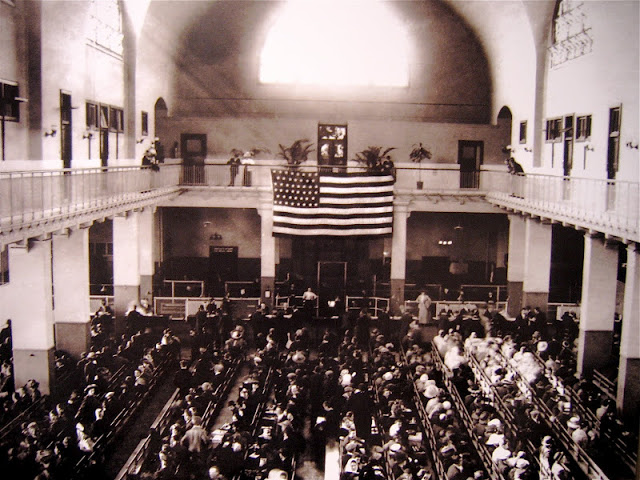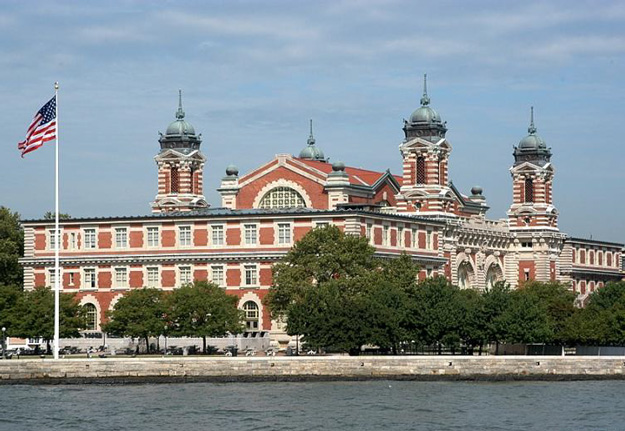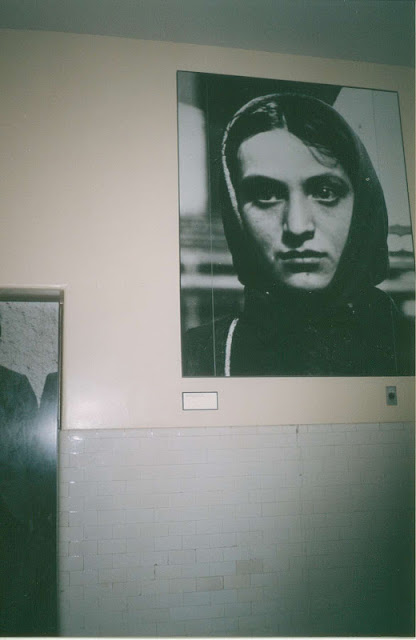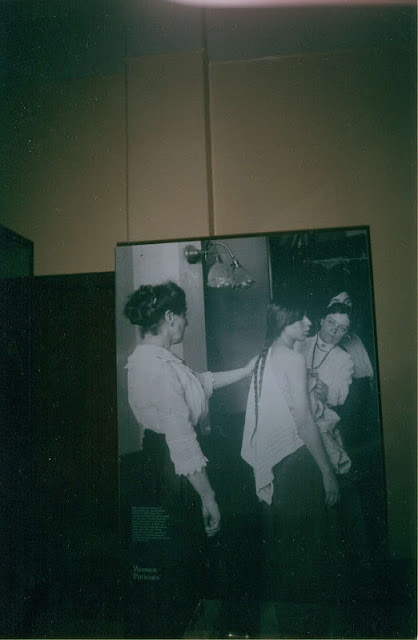

| Visitors Now: | |
| Total Visits: | |
| Total Stories: |

| Story Views | |
| Now: | |
| Last Hour: | |
| Last 24 Hours: | |
| Total: | |
Ellis Island
Coming back from a college visit in New York City, my dad and I stopped off in Jersey City and rode the ferry to Ellis Island, the gateway to America for the majority of the country’s 20th century immigrants. I had been immensely interested in immigrant history, having read droves of children’s and young adult historical novels about the immigrant experience, my favorites being Kathryn Lasky’s Dreams in the Golden Country: The Diary of Zipporah Feldman, a Jewish Immigrant Girl and Joan Lowery Nixon’s Land of Hope (Ellis Island). However, I had never visited the place that served as the first entry point for millions of immigrants to the United States in its history of operation, including my great-grandparents. Although they were ethnic Ukrainians, they were recorded at Ellis Island as arriving from Poland and Austria, the latter which was part of the Austro-Hungarian Empire.
While I certainly am interested in the lives of both of my modern day immigrant relatives since I know so little about either of them, my interest in my great-grandfather Pavlo (or Paul which was his anglicized name), is to a lesser extent. My paternal grandmother, who was an incredibly kind and sweet woman, didn’t have the fondest of opinions of her father-in-law (supposedly he never liked her since she wasn’t Ukrainian, especially since my grandfather’s two brothers married Ukrainian sisters). By all accounts he sounded like the typical patriarchal male of his time; he also spoke only words of English but knew enough to ask my grandmother each week “how much I get” when pointing to his paycheck. My great-grandmother Eva is another story. I’ve written about her before, how she raised three boys who by all accounts were quite wild in their youth and how she died much too young at the age of 49 from a brain tumor. She passed away in 1944 when all of her boys were overseas fighting in World War II and never saw any of them again before she died. The only picture I have of her is a passport size photo taken when she applied for her naturalization. She was extremely short (barely five feet), appeared to be overweight and looked weathered-most likely she hadn’t led an easy life either in the old country or the new one. But during my entire visit at Ellis Island I tried to imagine Eva there, a girl of only 17 which eerily enough was the same age I was when I visited.
The buildings at Ellis Island that have been restored and are open to the public are quite lovely. The Main Building was designed in the French Renaissance style and composed of brick that was trimmed with limestone and granite. Triple-arch entrances were of a majestic height and went all the way to the second story. After the immigrants had disembarked from the ships, they were herded inside the Main Building and up the stairs to the Registry Room, which unofficially was known as the Great Hall due to its immense size. The stairs marked the start of the medical inspection for the immigrants as physicians watched from the top to check the breathing, posture, gait, and overall physical fitness of people as they climbed. Those who were ill from sickness or old age could be marked for rejection at that point even before being processed. In the course of Ellis Island’s operational history, thousands of people were sent back to their native countries.
We visited on a late morning during the work week and so it was not at all crowded although I’m sure during its heyday, the island was a chaotic and frenzied mess, especially on April 17, 1907. That day 11,741 immigrants were admitted into the United States, the largest number granted entry in just one day. It was hard to imagine the noise in the Great Hall as being cacophonous since our tour group of a dozen people was quiet and reserved. The large rectangular room measured 200 feet long and 102 feet wide and for many immigrants, the room was astounding, as they had never seen such a large indoor space before. The sounds of thousands of voices echoed off the room’s incredibly high vaulted ceilings.
 |
| sandyleonardsnaps.blogspot.com |
It was in the Great Hall where the immigrants underwent medical and legal inspections. Immigrants were asked a series of questions, including how much money they had. The United States did not want to admit anyone who could become a financial burden on the government, and the average amount recommended for immigrants to have was between $18 and $25. Medical examinations were more intimidating because the slightest outward sign of disease or sickness would be enough to have you sent to the island’s hospital or worse, sent back home. Trachoma, a contagious eye disease rampant in third quarters on ships was checked by doctors using a buttonhook to life a person’s eyelid to look for the disease. This particular tool was greatly feared by all immigrants. The doctors on the island developed a system of symbols to denote a person’s health problem; these were then marked on the immigrant’s clothing using chalk. It was said that some crafty immigrants turned their coats inside out in rapid speed or simply brushed off the chalk before anyone was aware in order to gain admittance. It is estimated that two percent of those immigrants who arrived at Ellis Island after a long and harrowing journey were sent back due to having a chronic contagious disease, a criminal background (or for example, openly supporting the Communist Party), or insanity.
The Kissing Post is a wooden column outside of the Great Hall where new arrivals were greeted by their relatives and friends, with kisses and tears almost always involved. It seemed to be the predecessor for the airport arrivals area where travelers are still greeted with kisses (and tears in some cases) today.
Those immigrants who were granted admission into the United States then went their separate ways-many took the ferry over to New York while others headed to the Jersey City train station where they they took trains to their final destination. It’s here where my mystery with Eva begins. I have no idea who she came to America with. I have no idea who met her at Ellis Island since an immigrant girl of 17 would not have set out in the New World on her own. She arrived on Ellis Island in February of 1912 and she married my great-grandfather in June of 1917 (ironically on the same day I was born, 68 years later) in Bethlehem, Pennsylvania. For those five years I have no idea where she was. Did she go to Bethlehem right away after she left Ellis Island or did she go to New York City? While I have seen the manifest of the ship that she came over on, unfortunately the writing is illegible, especially her next address in the United States. The other matter I find slightly strange is that she married at the age of 23. While young in today’s society, she would have been considered a spinster 100 years ago, since many immigrants from Central and Eastern Europe in the early 20th century were child brides marrying at the ages of 13 and 14.
While there are numerous sites associated with immigration in America scattered throughout the country, nowhere is more of a living memorial than Ellis Island. Although immigrants have been coming to this country since the 17th century, it was the ones who passed through Ellis Island that helped in making its most lasting mark. Even if you don’t have a relative that passed through there, it’s definitely still worth a visit.
 |
| visitingdc.com |
2012-08-22 05:19:27
Source: http://www.theredheadedtraveler.com/2012/08/ellis-island.html
Source:






